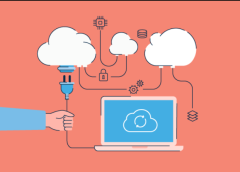In today’s digital landscape, cloud computing has become an indispensable component for businesses and individuals alike. With its flexibility, scalability, and cost-effectiveness, the cloud offers a myriad of benefits. However, understanding the cloud ecosystem, including its constituents and consumers, is essential for harnessing its full potential.
The Main Constituents of the Cloud Ecosystem
The cloud ecosystem comprises various components that work together to deliver computing resources over the internet. Here are the main constituents:
- Infrastructure as a Service (IaaS): At the foundation of the cloud ecosystem lies Infrastructure as a Service. IaaS providers offer virtualized computing resources, including servers, storage, and networking infrastructure, enabling users to deploy and manage their applications without the need for physical hardware.
- Platform as a Service (PaaS): PaaS providers offer a platform allowing developers to build, deploy, and manage applications without dealing with the underlying infrastructure. This abstraction layer simplifies the development process, streamlining application deployment and scalability.
- Software as a Service (SaaS): SaaS applications are fully hosted and managed by third-party providers, offering users access to software applications over the internet. Users can access SaaS applications through web browsers without the need for installation or maintenance, making it a convenient solution for businesses.
- Public Cloud: Public cloud providers, such as Amazon Web Services (AWS), Microsoft Azure, and Google Cloud Platform (GCP), offer computing resources and services over the internet to multiple users on a pay-per-usage model. Public clouds provide scalability, accessibility, and cost-efficiency, making them ideal for businesses of all sizes.
- Private Cloud: Private cloud infrastructure is dedicated solely to a single organization, offering enhanced control, security, and customization options. Private clouds can be hosted on-premises or by third-party providers, catering to organizations with specific compliance requirements or sensitive data.
- Hybrid Cloud: Hybrid cloud environments combine the benefits of both public and private clouds, allowing organizations to leverage the scalability of public clouds while retaining control over sensitive data through private cloud infrastructure. Hybrid cloud solutions offer flexibility and seamless integration between on-premises and cloud environments.
Cloud Consumers in the Cloud Ecosystem
In the cloud ecosystem, various entities act as consumers, utilizing cloud services to meet their computing needs. Here’s a breakdown of cloud consumers:
- Enterprises: Large enterprises leverage cloud computing to streamline their operations, enhance agility, and reduce infrastructure costs. Cloud services enable enterprises to scale their IT resources based on demand, improve collaboration among teams, and accelerate digital transformation initiatives.
- Small and Medium-sized Businesses (SMBs): SMBs benefit significantly from cloud computing, as it allows them to access enterprise-grade technology without hefty upfront investments. Cloud services enable SMBs to compete with larger counterparts, enhance productivity, and focus on core business activities without worrying about IT infrastructure management.
- Developers: Developers rely on cloud platforms and services to build, deploy, and scale applications rapidly. Cloud providers offer developer-friendly tools, APIs, and SDKs, enabling developers to innovate efficiently and bring their ideas to market faster.
- Individual Users: Individual users utilize cloud services for various purposes, such as storing and sharing files, accessing web-based applications, and streaming media content. Cloud storage solutions, email services, and productivity suites have become integral parts of everyday life for individual consumers.
- IoT Devices: With the proliferation of Internet of Things (IoT) devices, cloud computing plays a crucial role in managing and analyzing the vast amounts of data generated by connected devices. Cloud platforms provide the scalability and processing power required to handle IoT data streams and derive actionable insights.
The Evolution of Cloud Computing
Over the years, cloud computing has undergone significant evolution, shaping the modern digital landscape. Initially, cloud computing primarily focused on providing basic infrastructure resources, such as virtual servers and storage. However, advancements in technology and the growing demand for more sophisticated services have led to the emergence of advanced cloud offerings.
Today, cloud computing encompasses a wide range of services and deployment models tailored to meet diverse business requirements. From AI and machine learning capabilities to serverless computing and containerization, cloud providers continually innovate to address the evolving needs of their customers.
The Benefits of Cloud Computing
The adoption of cloud computing offers numerous benefits for organizations and individuals alike. One of the key advantages is scalability, allowing users to easily scale their resources up or down based on demand, eliminating the need for costly hardware investments. Additionally, cloud computing enables flexibility and agility, enabling businesses to adapt quickly to changing market conditions and customer demands.
Moreover, cloud services promote collaboration and productivity by providing anytime, anywhere access to data and applications. Whether employees are working remotely or collaborating across different locations, the cloud ensures seamless connectivity and collaboration.
Furthermore, cloud computing enhances security by offering robust data encryption, access controls, and compliance certifications. Cloud providers invest heavily in implementing advanced security measures to protect sensitive data and mitigate cybersecurity threats, providing peace of mind for businesses and individuals.
Conclusion
Understanding the constituents and consumers of the cloud ecosystem is essential for maximizing the benefits of cloud computing. Whether you’re a business looking to modernize your IT infrastructure or an individual seeking convenient storage solutions, the cloud offers a plethora of opportunities. By leveraging the right cloud services and providers, organizations and individuals can harness the power of the cloud to drive innovation, agility, and efficiency in today’s digital age.







Leave a Reply
You must be logged in to post a comment.